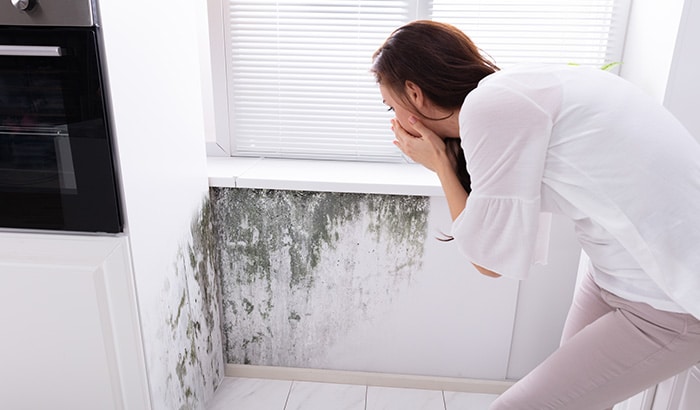Mold can be a sneaky intruder in our homes, often lurking in the shadows of hidden areas, far from plain view. It thrives in damp, dark conditions, making places like attics, basements, and behind walls prime spots for its unwanted growth.
Identifying mold in these elusive locations is crucial, not just for maintaining the integrity of your home but also for safeguarding your health. The faintest musty odor or a subtle stain can signal a much larger problem lying beneath the surface.
In this article, we will explore practical steps and creative techniques to help you uncover mold where it typically goes unnoticed. Armed with the right knowledge, you can take proactive measures to ensure your living space remains safe and healthy.
Let’s dive into the world of hidden mold discovery, where awareness is your best ally.
Common Signs of Mold Presence

When searching for mold in hidden areas of your house, it’s essential to be attuned to the subtle signs that might indicate its presence. First, watch for unexplained musty odors that seem to arise from nowhere; this pungent scent can often be the first clue to lurking mold.
Moreover, carefully inspect any areas with water damage or excessive moisture, as these are prime breeding grounds for mold spores. Look for dark spots, often black, green, or even white, which might be clinging to surfaces like walls, ceilings, or forgotten corners of your basement.
You may also notice unusual respiratory issues among family members or pets, worsening when in certain rooms—another indicator that mold may be infiltrating your home. Keep an eye out for visible condensation, bulging walls, and peeling paint; these visual clues could be the key to unlocking the mystery of hidden mold, preventing it from wreaking havoc on your living space.
Using Tools and Techniques for Detection

To effectively detect mold in those elusive, hidden corners of your home, utilizing the right tools and techniques is essential. Begin with a simple visual inspection—look for dark spots, water stains, or an unexplained musty odor that could signal a potential infestation.
Use a flashlight to illuminate dim areas, and consider employing moisture meters to gauge humidity levels within walls or under flooring. For the more tech-savvy, infrared cameras can reveal thermal patterns, identifying cooler spots that may suggest hidden moisture conducive to mold growth.
Additionally, sampling kits allow for environmental testing, enabling you to capture spores from the air, providing insights into their origin. Remember, tackling mold not only involves detection but understanding the nuances of where it thrives, so equip yourself with a keen eye and the right instruments for a thorough investigation.
Health Risks of Hidden Mold

The presence of hidden mold in your home can pose significant health risks, often without any immediate signs or symptoms. Breathing in mold spores can trigger a range of respiratory issues, from mild allergies to severe asthma attacks.
Individuals with weakened immune systems or pre-existing health conditions may experience even more dire effects, as mold can exacerbate existing ailments and lead to infections. Beyond the respiratory system, exposure to certain types of mold—such as black mold—has been linked to neurological symptoms, skin irritations, and long-term health complications.
The sneaky nature of hidden mold often means that it can flourish unnoticed in areas like behind walls, under carpets, or within ductwork, silently affecting the health of occupants. This makes vigilance vital; monitoring for moisture and regularly inspecting low-traffic areas can help mitigate these hidden hazards and protect your well-being.
Conclusion
In conclusion, identifying mold in hidden areas of your home is essential for maintaining a safe and healthy living environment. By being vigilant and knowing where to look—such as behind walls, under sinks, or in attics—you can catch potential mold growth before it becomes a serious issue.
Regularly inspecting these often-overlooked spaces, along with monitoring humidity levels and air circulation, can greatly reduce the risk of mold development. If you suspect an extensive mold issue or simply want peace of mind, enlisting the help of a professional Mold Inspection Company can provide you with a thorough assessment and remediation plan. Remember, early detection is key to keeping your home mold-free and protecting your family’s well-being.


